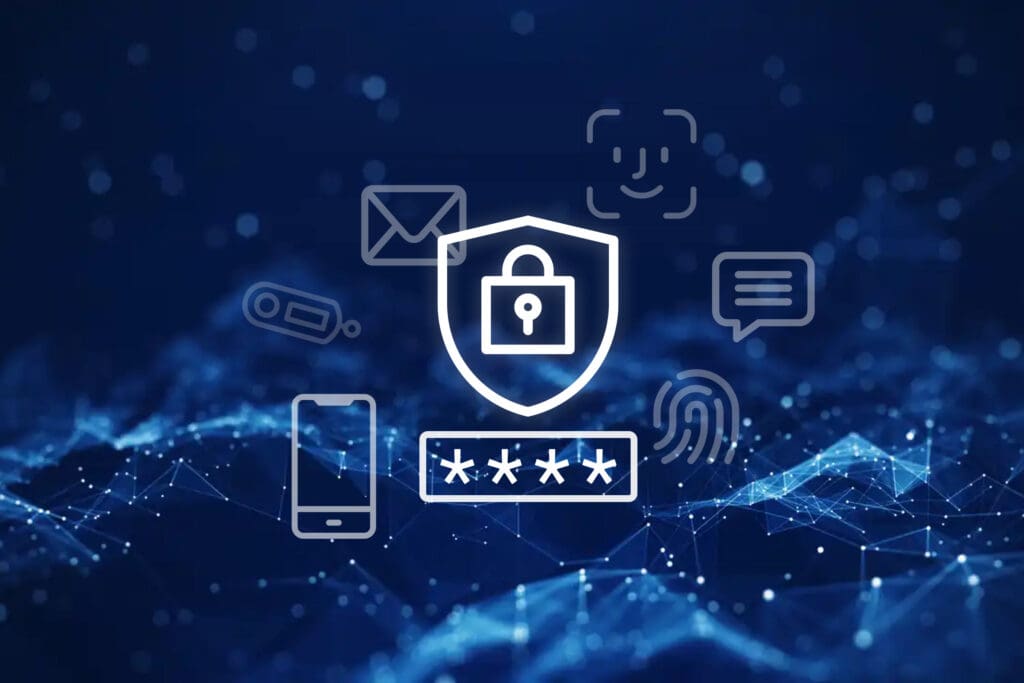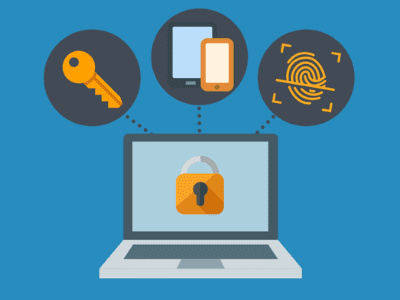MFA Risks are real, even if you think your accounts are super safe. Imagine you have a shiny treasure chest filled with your favourite toys, candy, or even video games. To keep it safe, you add not just one lock but two locks. To open it, you need both keys. That way, if someone steals one key, they still can’t get your treasure.
That’s basically how Multi-Factor Authentication (MFA) works in the online world. It’s like having more locks or guards protecting your treasure chest of emails, games, and online accounts. Instead of only asking for a password, MFA might also ask for a code sent to your phone, or even a fingerprint, before it lets anyone in.
Sounds super safe, right? But here’s the twist: just because you have two locks doesn’t mean a clever thief won’t find another way in. There are MFA risks that can still let hackers sneak past it, and sometimes, people make mistakes that weaken it. In this blog, we’ll break down how MFA works, the MFA risks, and the real-life lessons businesses and people can learn.
How MFA Works
Think of MFA as a ticket-checking system at a big theme park like Disneyland.
When you want to ride the roller coaster:
- First, you show your ticket (just like typing in a password).
- Then, the park employee might also ask you to show a stamp on your hand (like getting a code on your phone).
- Some special rides might even scan your fingerprint to make sure it’s really you.
One lock alone can’t keep your treasure 100% safe, but adding extra locks—like passwords, codes, or fingerprints makes it far tougher for anyone to sneak in pretending to be you.

The Three Factors of MFA
- Something you know: Like a password, a secret pin, or a favourite word.
- Something you have: Like your phone, an app, or a special USB security key.
- Something you are: Like your fingerprint, your face, or even your voice.
Using two or more of these together is what makes MFA special, but remember, MFA risks still exist.
Why MFA Isn’t Bulletproof
Even if MFA adds extra protection, it’s not an unbreakable magic shield. Let’s look at some simple reasons why:
Human Errors
- You might lose your phone that’s linked to MFA, and then you can’t log in.
- People fall for tricks (like fake websites) and accidentally give away their codes.
- Some people reuse weak passwords with MFA, which makes it easier for hackers to start cracking into accounts.
Clever Hackers
- Hackers can trick you with fake messages that look real. You think the code request is real and type it in, but it was a trap.
- They can use a SIM swap attack, where they trick your phone company into giving them your phone number. Now, your MFA codes go straight to them!
- They create malware (nasty computer programs) that can steal the codes when you type them.
Technical Issues
- Sometimes even the locks themselves have flaws, glitches or bugs in the MFA system that can give clever attackers a way to sneak past.
- Some websites have backup recovery options (like answering easy security questions) that are way less secure.
- MFA fatigue attacks spam you with nonstop MFA requests. You get annoyed and finally press “approve,” even though it wasn’t really you.
Real-World Examples
Here’s where things get interesting. These aren’t just theories. MFA risks have shown up in real life:
- The Twitter Hack (2019): Some hackers tricked Twitter employees into handing over login details, codes, and extra access. Even with MFA, hackers still got into very important accounts, including those of famous people’s Twitter accounts.
- Cryptocurrency Theft: Hackers tricked phone companies with SIM swaps to take control of people’s phones. Imagine a hacker calling your phone company and pretending to be you. Suddenly, your codes come to their phone instead. They then used this to steal millions in cryptocurrency.
- Phishing Emails: Hackers sometimes pretend to be from real companies. For example, you might get an email that looks like it’s from your game account asking you to “verify your login.” You type both your password and MFA code, but little do you know, you just handed them everything.
Fun Cybersecurity Facts
- Did you know some hackers once fooled face unlock by using a printed photo? Imagine tricking a high-tech camera with just paper.
- Some fingerprint scanners got confused by gummy bear candy. Yup, hackers copied fingerprints into candy material and tricked the sensors.
- Businesses often add MFA because hackers are always inventing new tricks. It’s like a cat-and-mouse game, whose smarter, the cat (security) or the mouse (hacker)?

Conclusion
Multi-Factor Authentication is one of the strongest defences we have, but it isn’t foolproof. Just like having extra locks or bodyguards, MFA makes it much harder for hackers to break in, yet MFA risks, such as mistakes, phishing tricks, and technical loopholes, can still expose your accounts.
The safest approach is to treat MFA as part of a bigger security toolkit. Combine it with strong, unique passwords, authentication apps instead of SMS, and cautious online habits. Think of it as a video game: MFA is your armour, but you also need extra power-ups like smart habits and awareness. When you use them together, your digital treasure chest stays locked, safe, and protected.
